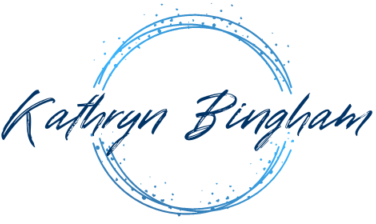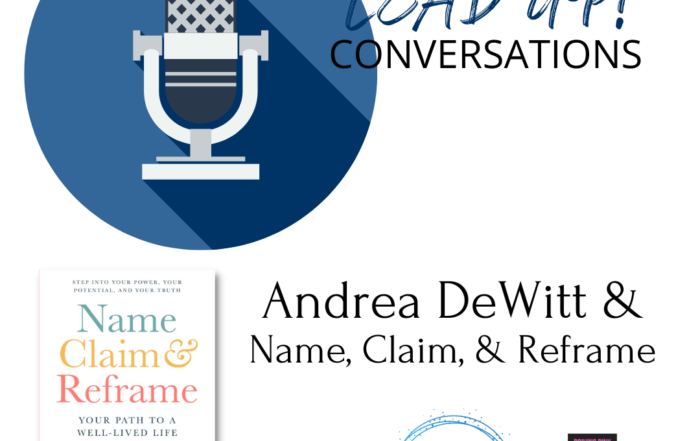Grow and Thrive: Embracing Change

Over the past month, I’ve been preparing new material for another group of women (and men) seeking to grow their leadership in a male dominated industry. Pondering the parallels and differences between this group and Women In Defense (WID) led me to consider historically how most industries were male dominated at some point. Increasing opportunities for women generates new sources of innovation and change in organizations.
This message focuses on two change related topics: growing through career change and dealing with organizational change—specifically, channeling stress in a positive way.
G-R-O-W
In a prior post, we covered the “quad” chart for career development. If you want a refresh, visit this post. The quad chart gives us a snapshot of where we see ourselves in the future (1 year forward, 2-5 years forward), our current strengths and opportunities, a set of development commitments that lead us towards our goal, and our current “brand.” This tool helps us organize our learning and development towards desired roles, and facilitates conversations with our leaders, mentors, and sponsors.
The rate of change today means we need to embrace continuous learning and growth so we don’t stagnate. Our skills and experiences must stay relevant. So how can we harness the power of growth to further our career? A simple coaching model, developed* in the 1980s, can help. The GROW model can be used by leaders developing teams, mentors, coaches, and as a self-guided exploration.
Let’s imagine a future career objective requires candidates to have international experience. A coaching conversation or personal exploration might capture the following:
- G = Goal. To be positioned for my future role, I need international experience. With another exploration, I might also think about whether I’ve defined a “smart” goal, and how I will know/measure achievement. If working with a team goal, I’d add how this goal fits with the team’s and organization’s strategic objectives.
- R = current Reality. I examine my current state. To understand my opportunities and any barriers to getting appropriate international experience, I might begin with these questions …
Am I single, or do I have family to consider? Does my organization offer international career moves? Does my function perform work internationally? Do I need language or other skills? What have I tried so far and what results have I seen? What is a reasonable timeline for readiness, accessing, and completing an international experience?
- O = Options. This is the time for creative exploration, for example:
Does international experience mean actually living and working overseas, or can I substitute an international program or contract work? Do any functions or programs offer rotation opportunities? Who do I know who has already done this, and who makes selection decisions? How can I connect with these individuals to learn more? Do both my leader and mentor know about my desire to obtain international experience? How will I weigh my options? Is there something I need to stop or give up to achieve this goal?
- W = Will. Sometimes the W is referred to as Way Forward, but I like “will,” because it ties to commitment and how we invest in ourselves. What willI do to lead me towards my objective?
When will I start, and how frequently will I check on my progress to plan? How will I stay motivated and accountable? What problems might surface, and how might I address them? Does everyone define a “win” the same way?
Consider using a GROW exercise to explore next step roles or development planning from your quad chart. Next, let’s consider the impact of change in organizations.
Change invites pressure
Here’s a quick analogy.
Imagine we need to open a pickle jar for the first time. During the manufacturing process, the lid was firmly secured, and may have even been heated and cooled to snug the lid tightly. In order to open the jar, we have to apply pressure to break the seal. We know we’ve succeeded when we hear the satisfactory “pop” and the lid loosens. Now we can easily open and close our pickles.
In organizations, we become entrenched or locked into a specific way of working over time. Change often requires a bit of pressure to loosen the hold of an established process. Why we change takes of different forms:
- The process no longer serves us. Achieving our goal takes too long, requires complicated steps, or is simply frustrating to go through. This might be like over tightening our pickle jar every single time. Not only is over tightening a waste of time and effort, but we might cause the lip of the glass jar to fracture.
- We access new technology—ways of thinking, software, or hardware. We discover that use using a simple sheet of ribbed rubber gives us better grip to open our pickle jar more quickly and easily.
- We’re motivated by the reward. We’d love a simple, fast way to always enjoy pickles on our sandwich.
Even if we seek the proverbial “pickle,” the pressure of change often brings discomfort. As leaders, our role is to help channel discomfort into positive creativity and to manage the pressure to ensure we don’t overwhelm our people or operational systems.
Thriving amidst organizational change
Adapting successfully to ongoing change requires an understanding of “stress.” Stress, by itself, can be a positive catalyst. To thrive when stress stretches us, we need both coping strategies and resilience. Let’s examine each of these.
A bit of stress prompts our creative juices. We call this beneficial form of stress “eustress” or good stress. We ask, “What can we do differently? How might we innovate?” That stretch allows us to solve problems and accomplish more.
The 1995 movie Apollo 13 portrays a dramatic example of creative pressure. Astronaut lives are at stake. Space program personnel must literally solve a “square peg in the round hole” dilemma, using only supplies on the spacecraft. Here’s a link to the scene. https://www.youtube.com/watch?v=1cYzkyXp0jg While the real life dilemma played out differently than the movie version, the issue and solution were the same.
Strategic applications of stress to a system can improve performance. But what if there’s no strategy, just pressure? That’s when we have a problem. Negative forms of stress—“distress”—strain the system.
You’ve heard the term “stretched too thin.” Upon demand, we’re able to extend our physical and mental capacity like a rubber band. We also need a periodic release of this tension to reconstitute and recover. Stretching a rubber band allows us to hold more goods together. Removing the band in an appropriate time returns it to its original state. If we always leave the band stretched, elasticity is lost. Over time, the rubber deteriorates. When we stretch the band past capacity, it can snap.
As humans, we have two methods to help us thrive, not just survive, amidst change. Coping mechanisms mitigate the impact of stress and intermittent periods of recovery equip us for times of stress. Both influence our physical response and mental outlook during periods when we’re stretched.
Coping takes many forms. For example, if we face a dire medical diagnosis, we might learn as much as we can. We can join a support group. We might begin practicing meditation. Coping mechanisms alleviate some of the strain of stressful experiences.
Integrating recovery actions facilitates resilience. Intentional selfcare can take the form of moments—a minute or two of deep breathing—or blocks of time, such as alternating periods of peak performance with less taxing activity. In the workplace, short walks, lunch away from our desk, disconnecting from devices after hours, and taking earned vacation support resilience. Leaders who model taking effective breaks strengthen their team’s ability to tap resources as needed and then recover.
Find a partner for change
A key support for dealing with stress involves choosing our outlook. Are we taking a glass half empty or half full view of our situation? How we frame an issue determines possible solutions. Sometimes we need a sounding board to help us get perspective and reframe the change we face or seek in life and work.
If you’re feeling pressure from personal or professional change, reach out to a trusted advisor. Often, just the act of talking things through generates awareness of progress made and new or expanded options. Additionally, a partner in change can support us by holding us accountable for commitments we make to our self and others. He or she also reminds us to pause and celebrate achievements and not just move on to the next challenge. Change partners help us build resiliency on our journey towards success.
What are your thoughts on the GROW model or navigating a system’s stress? We’d love to hear your thoughts.
*The GROW model stems from work by Alan Fine, Graham Alexander, and Sir John Witmore.
Thank you for visiting Dr. Kathryn Bingham’s blog! We invite your discussion at LEADistics’ community page. Fans and honest critics are welcomed! Please see our Comments Policy and reuse Permissions on the FAQ page. All posts are covered by copyright law, with all rights reserved.
Social Share
Recent Posts
LeadUP! Juana Bordas
This LeadUP! Conversation features Dr. Juana Bordas, president of Mestiza Leadership International and author of newly updated The Power of Latino Leadership (listen or watch here). Bordas shares how her immigrant experience shaped her leadership. [...]
Power of the Pivot
The idea seems simple. When something isn’t working, just change. Shift. Adapt. But our brain sabotages the effort. We’re convinced that if we just do better or try harder with our current path or process, [...]
LeadUP! Andrea DeWitt
In this LeadUP! episode, Dr. Kathryn Bingham and author Andrea DeWitt talk about her new book, Name, Claim & Reframe and how individuals can step into their power, their potential, and their truth. Both the [...]





